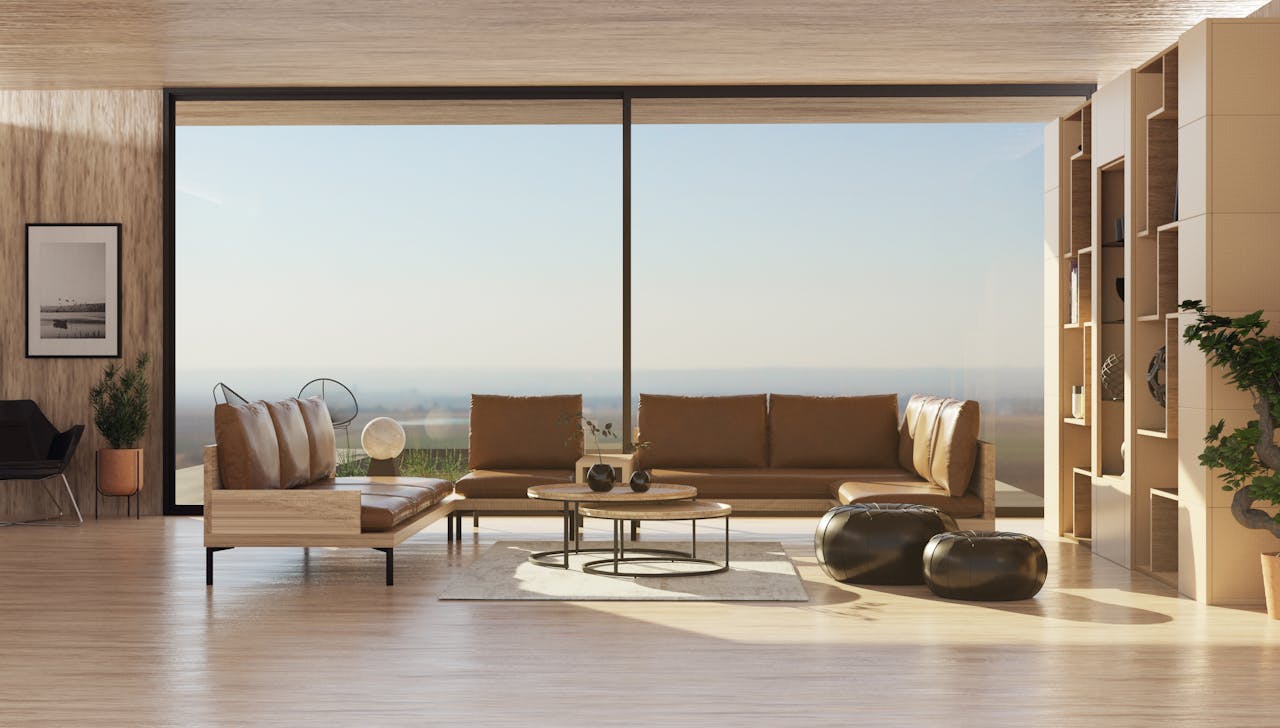3D Visualization Hacks to Boost Your Boston Apartment Listing

Boston buyers and renters are savvy. They scroll through hundreds of listings every day, many with the same wide-angle photos and generic copy. What stops the scroll is clarity: a true sense of layout, light, and livability.
That's where 3D visualization shines.
By creating photo-real interiors, exteriors, and even VR tours, you can show prospects exactly how a space functions before they ever step inside. This isn't about virtual staging or adding stock furniture to a shot, but about producing strategic visuals that make your apartment the most competitive listing.
Be Clear About What 3D Visualization Is, And What It Isn't
Virtual staging involves editing a photo. 3D visualization, on the other hand, reconstructs the space as a model, then renders views from that model. That difference matters for trust.
With 3D, you can show planned finishes for a renovation, or demonstrate how a long, narrow living room actually works with a small dining set, without misrepresenting what is physically there today. Add a one-line disclosure in the listing so prospects know exactly what they are viewing.
A strategy-first partner makes this easy. A good 3D visualization company focuses on what your audience needs to see, then builds interior and exterior renders or a lightweight VR tour around those questions.
The goal is simple: reduce uncertainty, accelerate decisions, and make approvals with lenders, boards, or condo associations smoother.
Lead With Flow: A Floor-Plan Render That Explains Movement
Boston homes often have quirks, from parlor-level brownstones to triple-deckers with long hallways. Start with a clean 3D floor-plan render that shows scale, door swings, and natural circulation.
Include bed sizes, a dining table footprint, and a sectional outline so viewers can judge fit instantly. If the unit spans multiple levels, add a simple stacked diagram to show vertical relationships.
Turn that floor plan into a short motion clip. A 15-30 second path from the front door to the primary bedroom does more than ten stills. Keep camera height realistic and avoid dramatic lenses, so the result matches what a buyer will feel at a showing.
Use Interior Renders To Solve "Awkward Room" Anxiety
Every listing has a head-scratcher: a windowless office, a tight eat-in kitchen, a sloped-ceiling bedroom in the eaves. Render those rooms with honest lighting and right-sized furniture.
Show two layouts side by side, for example, a desk nook versus a nursery setup, so prospects can picture daily life. Small, accurate visuals can truly make your apartment look great without overselling.
Keep to the Boston aesthetic: painted trim, oak floors, brick party walls, and shaker cabinetry. If you propose upgrades, label them "proposed finishes." Buyers forgive unfinished work when they can see the destination and the numbers make sense.
Put The Building And Street In Context
Neighborhood cues sell the lifestyle. An exterior render with accurate brick color, cornice depth, and stoop geometry helps people recognize the building on arrival.
Add a dusk shot to showcase window glow and street trees, and a daylight shot to show shadows and facade detail. If parking or bike storage is a strength, include a callout view that shows access and clearances.
Seasonality matters in Boston. Consider a subtle winter variant to demonstrate snow management and entry safety, and a late-spring variant to shed light on the facade after leaf-out.
Context builds confidence that the property fits the rhythms of the city, not just a perfect afternoon.
Show Options, Not Guesswork
People hesitate when they cannot reconcile taste with space. Offer two or three credible schemes per key room: warm versus cool paint, island versus peninsula, tub-shower combo versus walk-in.
Keep changes bounded to what the condo docs and budget allow, then note timelines and vendors. This reframes the listing from "will this work" to "which version do I prefer," which is powerful when you are selling your apartment.
Do the same with storage. A quick render of a closet system, a built-in bench at the entry, or pantry shelving helps buyers see where everyday life goes. Clarity beats clever adjectives every single time.
Turn Visuals Into Lead Magnets
Your best renders should live in the gallery, the listing PDF, and your email follow-ups. Add a QR code at the open house that jumps to a short web viewer with the floor plan and three key camera angles.
Gate the full VR tour behind an email form so you can follow up with real questions, not generic "are you still interested" pings.
Keep file hygiene tight. Name assets consistently, compress web images properly, and include alt text for accessibility.
When you share assets with lenders, appraisers, or condo boards, include a one-page summary that distinguishes existing conditions from proposed finishes so approvals move faster.
Measure What Moves The Needle
Tie visuals to outcomes. Track click-through rates on the floor-plan clip, time-on-page for the awkward-room renders, and how many inquiries reference the VR link.
Correlate those signals with private showings booked and offer quality. If a certain angle or time of day outperforms, replicate it across your portfolio.
Most importantly, keep it honest. Boston buyers are detail-hunters. If a render suggests a king bed will fit, make sure the dimension lines prove it. If a kitchen layout removes a non-structural wall, confirm that with a contractor before you publish the listing.
Published 8/22/25